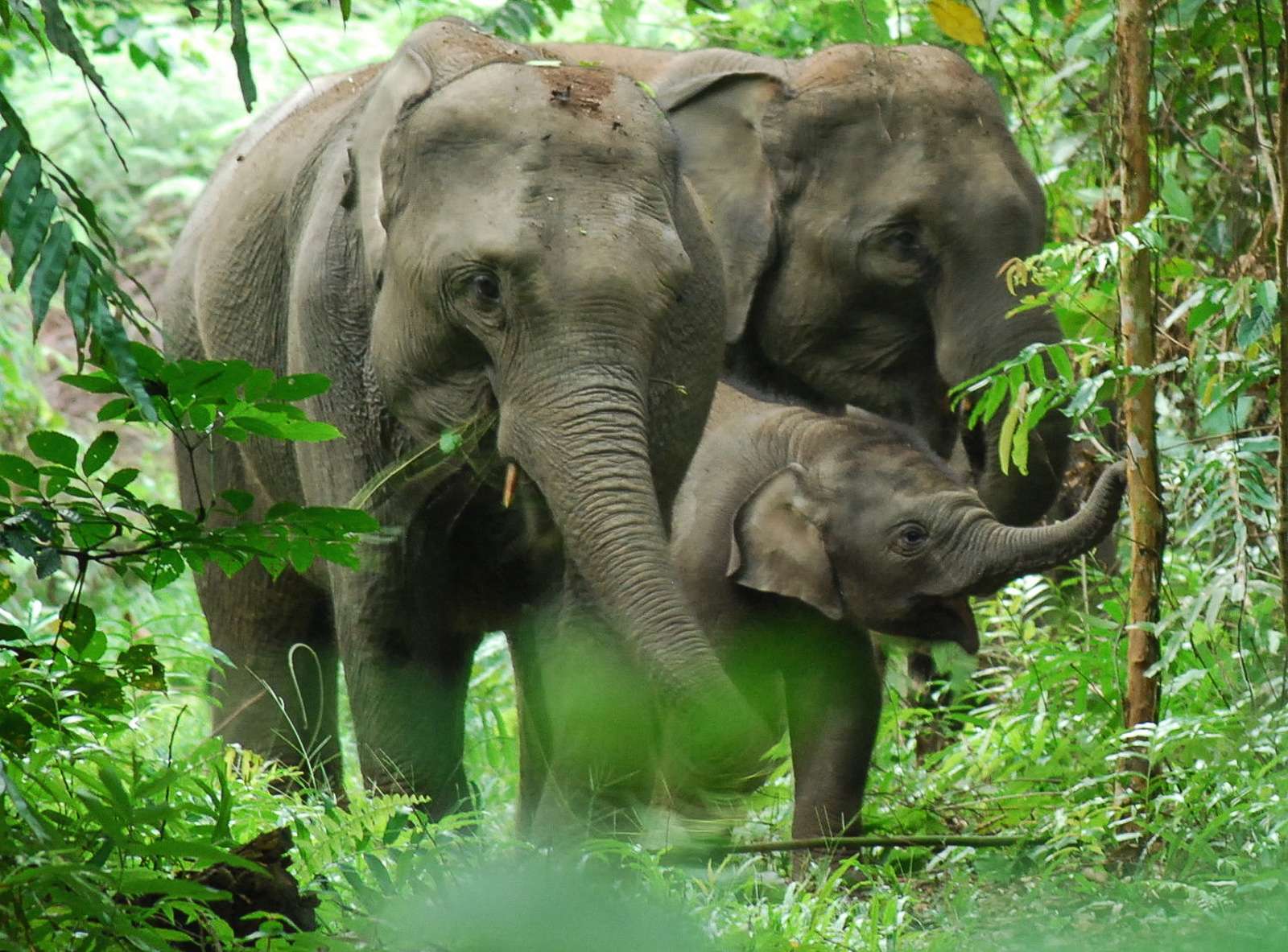
Sumatran Elephant
Sumatran elephant (Elephas maximus sumatranus ) is one of three recognized subspecies of the Asian elephant, and native to the Indonesian island of Sumatra. In 2011, IUCN upgraded the conservation status of the Sumatran elephant from endangered to critically endangered in its Red List as the population had declined by at least 80% during the past three generations, estimated to be about 75 years. The subspecies is preeminently threatened by habitat loss, degradation and fragmentation, and poaching; over 69% of potential elephant habitat has been lost within the last 25 years. Much of the remaining forest cover is in blocks smaller than 250 km2 (97 sq mi), which are too small to contain viable elephant populations.
| KINGDOM | Animalia |
| PHYLUM | Chordata |
| SUBPHYLUM | Vertebrata |
| CLASS | Mammalia |
| ORDER | Proboscidea |
| FAMILY | Elephantidae |
| GENUS | Elephas |
| SPECIES | Elephas maximus sumatranus |
| POPULATION SIZE | 2,400-2,800 |
| LIFE SPAN | 70 YRS |
| TOP SPEED | 43 KM/H |
| WEIGHT | 2-4 T |
| HEIGHT | 2-3.2 M |
Appearance
Sumatran elephants are the smallest Asian elephants, meanwhile differing from the other 2 sub-species morphologically, anatomically and genetically by brighter skin with less de-pigmented spots. Males of Sumatran elephant generally exhibit visible tusks, which don’t tend to grow long. Tusks of female elephants are extremely short, usually being hidden under the upper lip. During the past 25 years, these endangered animals have lost about half of their overall population and are currently extinct from 69% of their original range as a result of deforestation.
Distribution
Geography
| CONTINENTS | Asia |
| SUBCONTINENTS | Southeast Asia |
| COUNTRIES | Indonesia |
| REGIONS | Sumatera |
| BIOGEOGRAPHICAL REALMS | Indomalayan |
| WWF BIOMES | Tropical moist forests |
Sumatran elephants are endemic only to Sumatra Island (Indonesia), where these animals inhabit areas nearby rivers in lowland forests as well as hill forests during certain seasons.
Biome: River.Forest
Climate zones: Tropical
Habits and Lifestyle
The Sumatran elephants are highly sociable animals, forming herds of 20 – 35 or 3 – 23 (according to another source) individuals, which are dominated by the largest adult female. When reaching the age of adolescence, males are either forced to leave the herd or do it by their own will, typically joining the herd only for mating. Meanwhile, females continue living with the herd, where they serve as ‘nannies’. Old adult males are completely solitary due to being unable to travel with the herds. These elephants may be active at any time of the day, although the period of increased activity seems to occur from 2 hours before late afternoon till 2 hours before dawn, during which they look for food. When a group travels, its members constantly keep in touch in order to keep integrity of the herd. Typical forms of communication are soft vibrations of the upper trunk that are heard by conspecifics. According to a recent study, these animals are able to give out subsonic sounds, perceived at a distance of up to 5 km.
| GROUP NAME | herd, memory, parade |
| LIFESTYLE | Terrestrial, Precocial, Browsing, |
| SEASONAL BEHAVIOR | Not a migrant |
Diet and Nutrition
Sumatran elephants are herbivores. The usual diet of these elephants consists of liana, bark, banana, young leaves as well as various types of wild herbs. When coming across paddy fields or farmlands, Sumatran elephants may also use paddy, sugar cane, young coconut leaves as well as different fruits such as papaya.
DIET: Herbivore,
Mating Habits
| REPRODUCTION SEASON | ny time of the year, peak occures during the rainy season |
| PREGNANCY DURATION | 19-21 months |
| BABY CARRYING | 1 calf |
| INDEPENDENT AGE | 3 years |
| FEMALE NAME | cow |
| MALE NAME | bull |
| BABY NAME | calf |
Little is known about the mating and reproductive behavior of Sumatran elephants. These animals may breed at any time of the year with a peak period, occurring during the rainy season. Gestation period lasts for 19 – 21 months, yielding a single baby every 4 years. A newborn elephant of this species usually weighs less than 90 kg. During the first 2 years of its life, the calf feeds upon maternal milk. Weaning occurs at about 3 years old. The age of sexual maturity is 8 – 10 years old for females and 12 – 15 years old for males.
Population
Population threats
One of the biggest threats to the population of this species is turning of their natural range into farmlands and human settlements, which leads to conflicts between the elephants and humans, resulting in removal and large numbers of mortality among populations in the wild. Sumatran elephants are killed not only during these conflicts, but are also hunted for their ivory, which has a high commercial value. The remaining population in Sumatra nowadays occupies seven provinces. However, these elephants continue to suffer from loss of their habitat and increasing conflicts with humans.
Population number
According to the WWF (World Wildlife Fund), the total Sumatran elephant population size is around 2,400-2,800 wild individuals. This species’ numbers are decreasing and the animal is currently classified as Critically Endangered (CR) on the IUCN Red List.
POPULATION TREND: Decreasing

